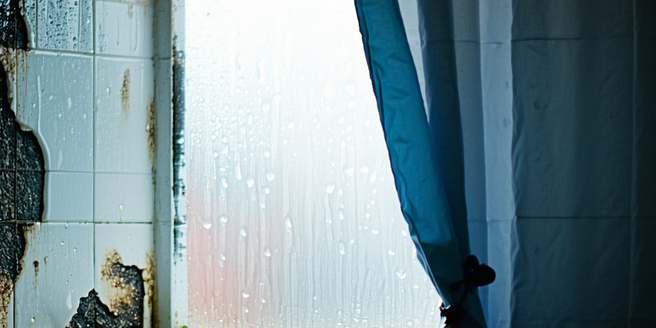
Understanding the Causes of Winter Mold Growth
Mold thrives in damp and humid environments, and winter often creates the perfect conditions for its growth. As temperatures drop, windows are kept shut, and heating systems dry out the air, increasing indoor humidity levels. This moisture can condense on cold surfaces like windows and walls, providing a breeding ground for mold. Additionally, snow-covered roofs and inadequate ventilation in attics can lead to ice dam formation, causing leaks that infiltrate the home’s insulation and ceilings. By understanding these conditions, homeowners can be more vigilant in maintaining their home’s humidity levels, checking for leakages, and ensuring adequate air circulation to prevent the establishment of mold.
Identifying Common Mold-Prone Areas in Your Home
Despite the belief that mold is a problem only in basements, numerous areas in houses are vulnerable to mold growth. Bathrooms with poor ventilation, particularly behind tiles and around the tub, are common sites. Kitchens, due to cooking steam, can accumulate moisture, especially under sinks or behind appliances. Laundry rooms with unvented dryers can harbor high humidity levels. Window sills and frames, if not sealed correctly, might allow moisture intrusion, turning them into potential mold habitats. Attics and basements, as they are often less frequently used and colder, can experience condensation. Keeping an eye on these hot spots ensures early detection and prevention of mold problems.
Effective Prevention Strategies to Combat Mold
Preventing mold begins with controlling moisture and humidity levels within the home. Use dehumidifiers in damp areas and ensure proper ventilation in kitchens and bathrooms. Regularly inspect and fix leaks, especially in roofs and pipes, to reduce water intrusion. It’s important to act quickly when leaks are found to prevent further damage and mold growth. Ensure that gutters and downspouts direct water away from the house foundation. Use mold-resistant products during renovations, especially in moisture-prone areas. Insulating surfaces that might experience condensation, like pipes and external walls, can prevent mold growth. Finally, maintaining indoor humidity below 60% can significantly reduce mold proliferation.
DIY Solutions for Minor Mold Issues
For small mold issues, homeowners can employ several DIY solutions before seeking professional help. A simple solution of white vinegar or baking soda can be effective against light mold growth. Mix one part vinegar with one part water in a spray bottle, apply to the affected area, and let it sit for an hour before cleaning. For porous surfaces, such as wood or drywall, use baking soda paste and scrub with a brush. Removing humidity is key, so using fans or opening windows can help dissipate moisture. However, proper protective gear, including gloves and masks, should be worn to prevent inhalation or skin contact.
When to Call in Professional Mold Remediation
While minor surface mold can be addressed with home remedies, certain situations necessitate professional intervention. If mold covers an area larger than ten square feet, it indicates a more significant issue that may require extensive cleaning and repair. Persistent health symptoms like allergies or respiratory problems among residents could also signify a severe mold problem. Structural infestations, particularly in hard-to-reach places or heating and air conditioning systems, should be handled by experts to ensure thorough cleaning without further dispersion. Professionals have the tools to safely remove mold spores and address underlying moisture problems effectively.
Maintaining Mold-Free Indoor Air Quality
Maintaining healthy air quality involves regular cleaning and inspection of HVAC systems to prevent mold spores from circulating. Change air filters frequently and consider using HEPA filters which can trap mold spores. Be aware of any musty odors as they are often an early indicator of mold presence. Keep windows open when possible to increase airflow and reduce indoor moisture accumulation. Houseplants, selected for air purifying qualities, can help absorb toxins and humidity. Ensure bathroom and kitchen exhaust fans are functioning properly to expel steam and heat. An air purifier with a dehumidifier function can also aid in maintaining optimal humidity levels, thereby curtailing conditions that favor mold growth.
